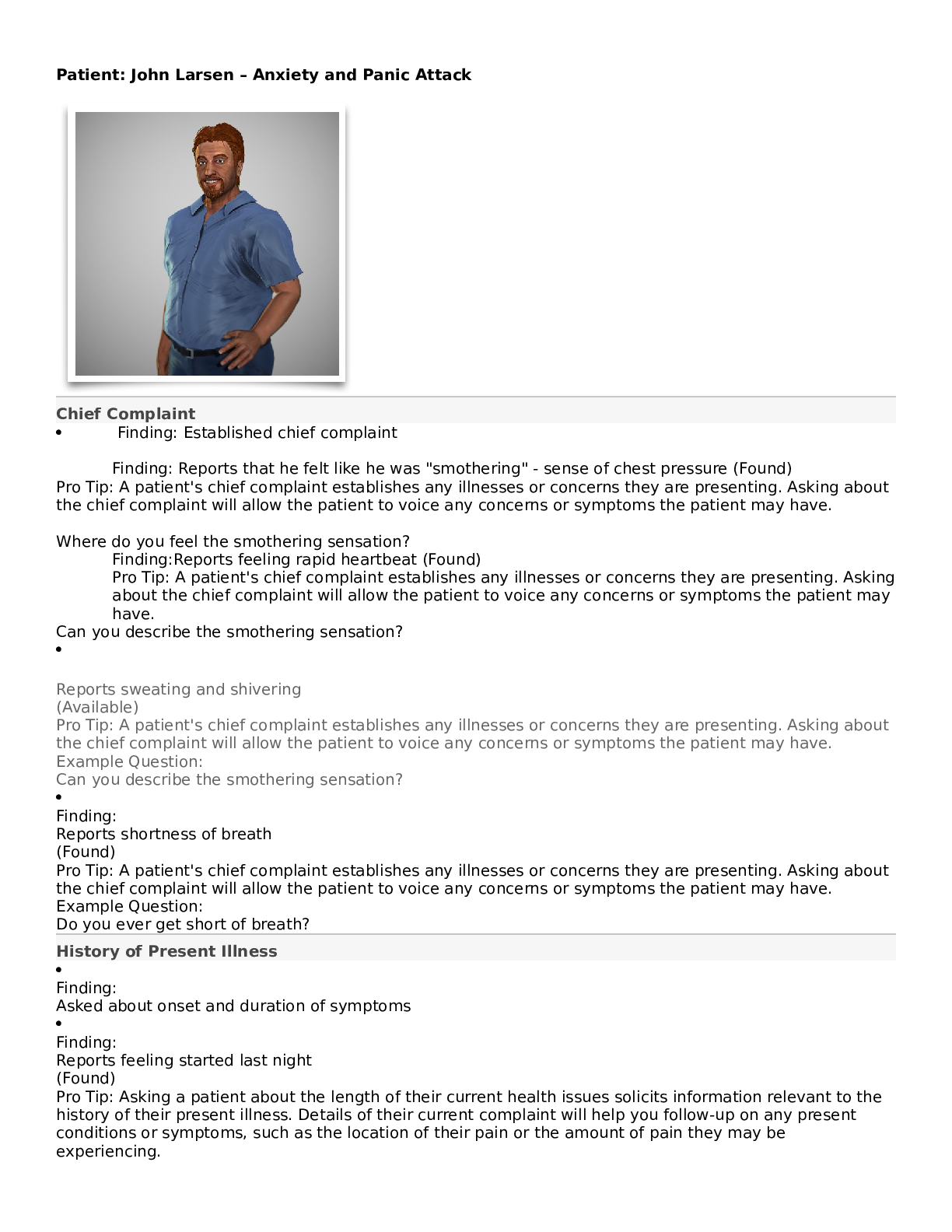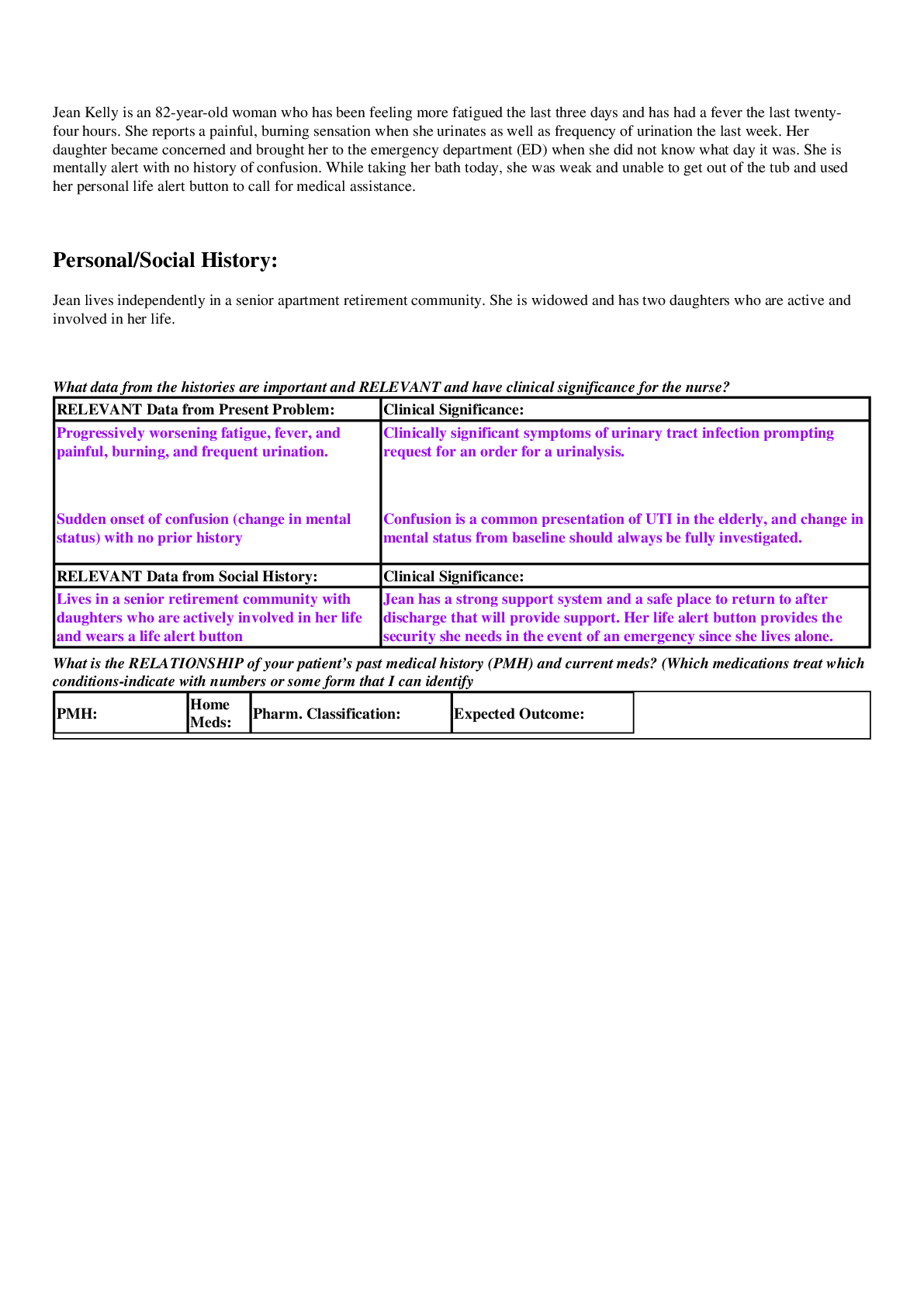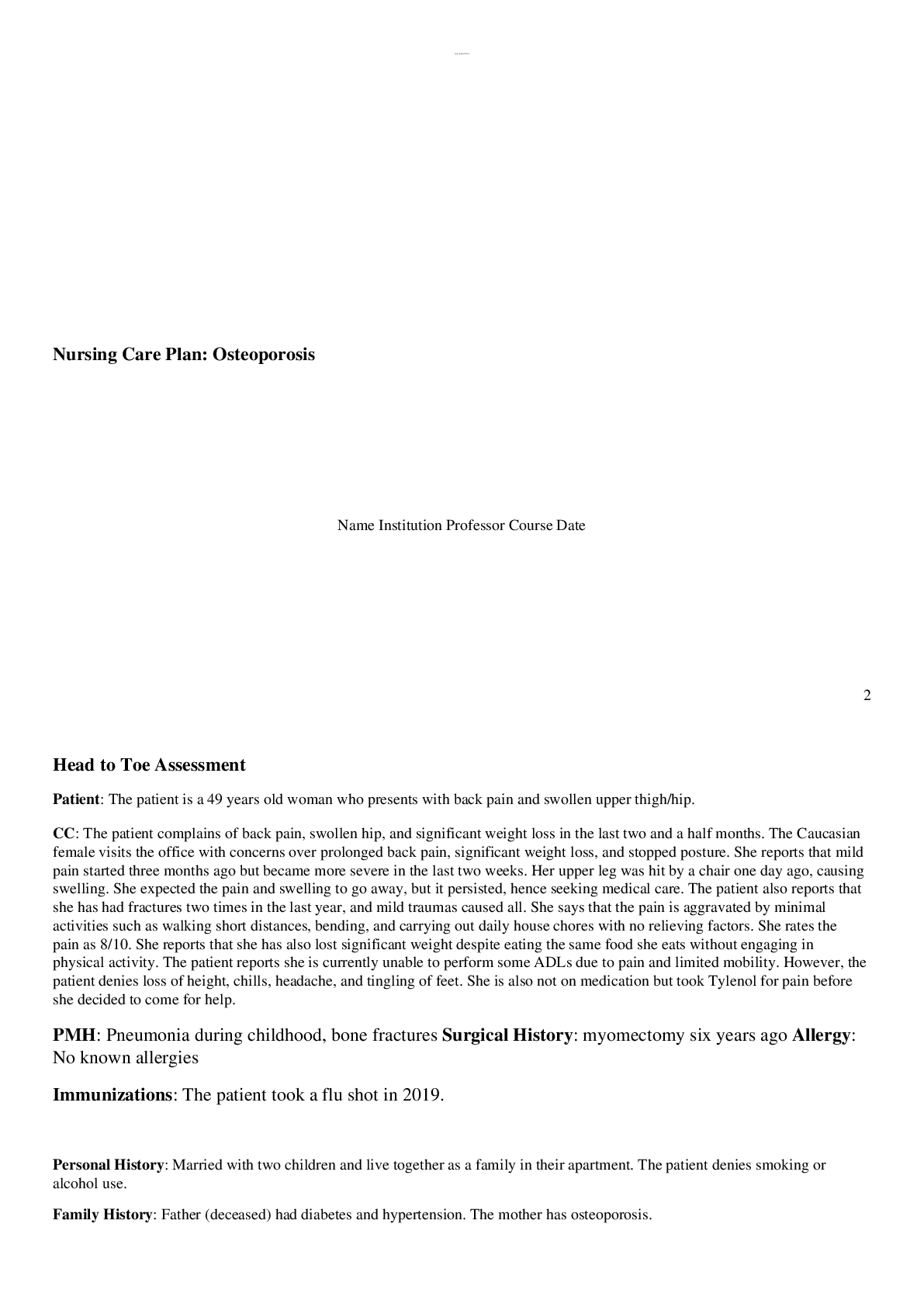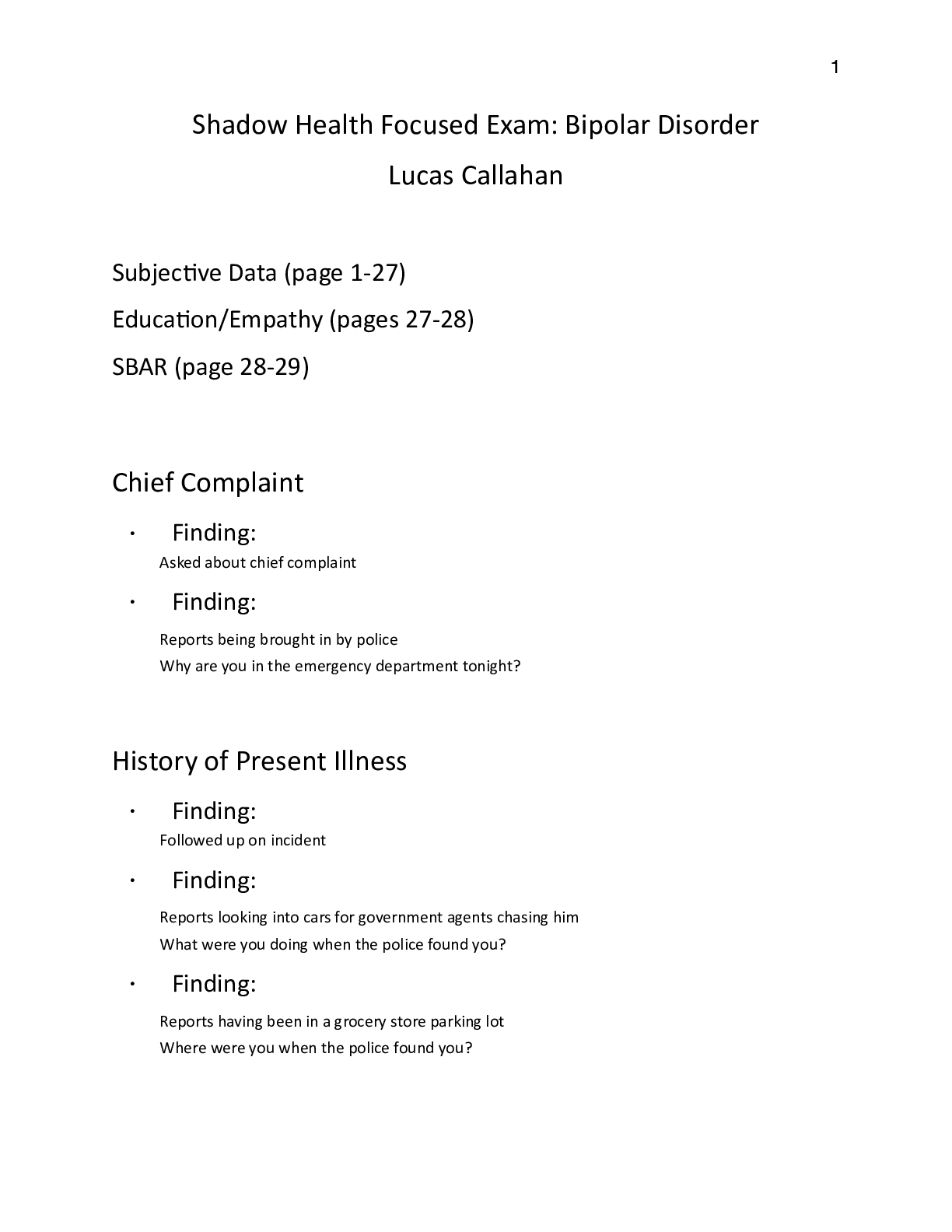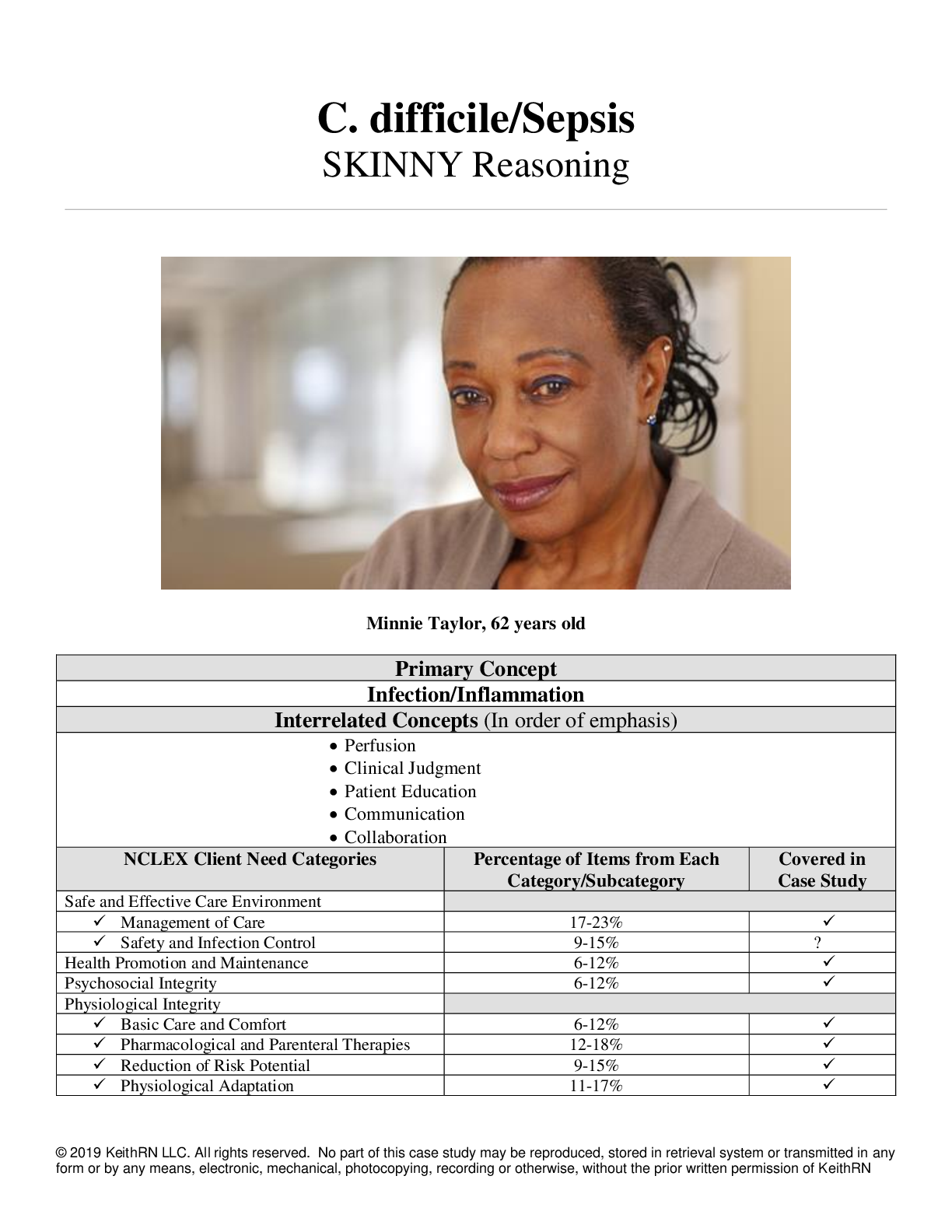*NURSING > CASE STUDY > vSim Clinical Packet Rashid Ahmed. Complete Case Study (All)
vSim Clinical Packet Rashid Ahmed. Complete Case Study
Document Content and Description Below
vSim Clinical Packet Rashid Ahmed. Complete Case Study.DESCRIBE DISEASE PROCESS AFFECTING PATIENT (INCLUDE PATHOPHYSIOLOGY OF DISEASE PROCESS) Hypokalemia is decrease in plasma potassium levels belo... w 3.5 mEq/L (3.5 mmol/L). Because of transcellular shifts, temporary changes in plasma potassium may occur as the result of movement between the intracellular fluid and extracellular fluid compartments. Causes acid- base imbalance and excessive GI or urinary losses such as from vomiting, diarrhea, dehydration and anorexia. Dehydration happens when lose too much fluid and water from the body. The body needs water and other elements called electrolytes. The right amount of both of these for the body to be able to work normally. The lose some fluids each day happens through sweat, urine, bowel movements, and breathing. If the water is not replaced will lead to dehydrated, this may be a serious health problem. DIAGNOSTIC TESTS (REASON FOR TEST AND RESULTS) PATIENT INFORMATION ANTICIPATED PHYSICAL FINDINGS ANTICIPATED NURSING INTERVENTIONS Potassium level (serum) is less than 3.5 mEq/L. Arterial blood gas analysis shows elevated bicarbonate and pH levels. Serum glucose level is slpossightly elevated. Potassium level (urine) below 20 mEq/L suggests poor intake, intracellular shifting, or GI loss Hyporeflexia (See Clinical effects of hypokalemia.) Weak, irregular pulse Tachycardia, tachypnea Hyporeflexia Weak, irregular pulse Tachycardia, tachypnea Mr. Rashid had developed abdominal cramping, nausea, vomiting, and severe diarrhea after eating lunch at a local restaurant. Admitted to the ED with a diagnosis with dehydration and hypokalemia. Reported dizziness, weakness, and continued nausea. Wash hands, introduce self, and identify patient Obtain vital signs, including asking about allergies and pain level assessment Check the provider’s order in the electronic health records (EHR) Asked if the patient was allergic to anything Implement safety measures, educated activities, safety and fall risk Provide high-potassium foods Educated about intake and output Educated about dehydration Obtain specimens for laboratory testing, including frequent serum potassium levels [Show More]
Last updated: 2 years ago
Preview 1 out of 14 pages

Buy this document to get the full access instantly
Instant Download Access after purchase
Buy NowInstant download
We Accept:

Reviews( 0 )
$15.00
Can't find what you want? Try our AI powered Search
Document information
Connected school, study & course
About the document
Uploaded On
Mar 17, 2021
Number of pages
14
Written in
Additional information
This document has been written for:
Uploaded
Mar 17, 2021
Downloads
0
Views
197


